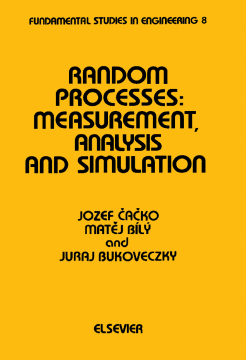
BOOK
Random Processes: Measurement, Analysis and Simulation
J. Cacko | M. Bily | J. Bukoveczky
(2012)
Additional Information
Book Details
Abstract
This book covers the basic topics associated with the measurement, analysis and simulation of random environmental processes which are encountered in practice when dealing with the dynamics, fatigue and reliability of structures in real environmental conditions. The treatment is self-contained and the authors have brought together and integrated the most important information relevant to this topic in order that the newcomer can see and study it as a whole. This approach should also be of interest to experienced engineers from fatigue laboratories who want to learn more about the possible methods of simulation, especially for use in real time on electrohydraulic computer-controlled loading machines.
Problems of constructing a measuring system are dealt with in the first chapter. Here the authors discuss the choice of measuring conditions and locations, as well as the organization of a chain of devices for measuring and recording random environmental processes. Some experience gained from practical measurements is also presented. The recorded processes are further analysed by various methods. The choice is governed by the aims of the measurements and applications of the results. Chapter 2 is thus devoted to methods of random process evaluations for digital computers, both from the fatigue and dynamic point of view. The most important chapter is Chapter 3 as this presents a review of up-to-date methods of random process simulation with given statistical characteristics. These methods naturally follow those of random process analysis, and their results form initial data for the corresponding simulations algorithms, including occurrences of characteristic parameters of counting methods, reproduction of correlation theory characteristics and of autoregressive models. The simulation of non-stationary processes is treated in depth, taking into account their importance for practical applications and also the lack of information of this subject.
The book is intended to help resolve many practical problems concerning the methods and quality of environmental process evaluation and simulation which can arise when up-to-date loading systems with computer control are being used in material, component and structural fatigue and dynamic research.
